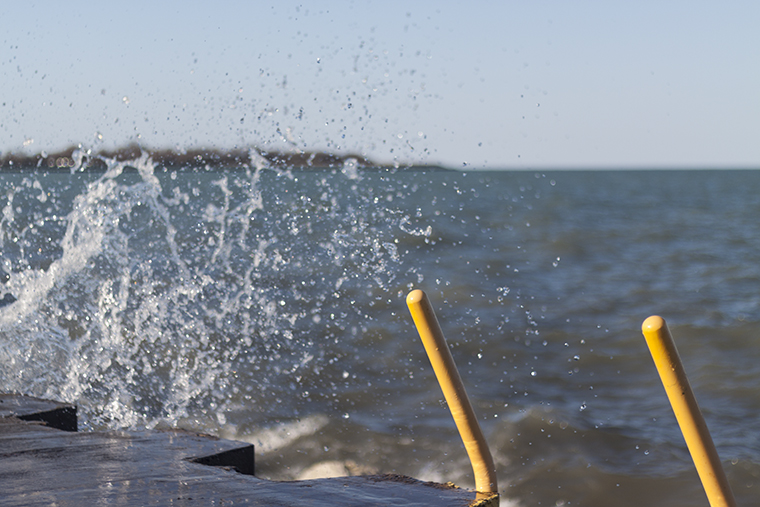Federal, local grants aim to clean up lake
Federal, local grants aim to clean up lake
May 5, 2014
Mayor Rahm Emanuel has joined the U.S. Environmental Protection Agency’s efforts to improve Lake Michigan’s water quality.
During an April 26 press conference, the EPA announced that it would award two $1 million grants to improve the water quality of Lake Michigan as part of its Great Lakes Restoration Initiative. Chicago is one of 16 cities to receive such grants, which can be used to cover up to half the cost of implementing green infrastructure projects that can keep contaminated storm water and rainfall runoff out of Lake Michigan, according to an April 26 EPA press release.
To filter more than 4 million gallons of stormwater annually, Chicago plans to use $812,000 in grant money to install bioswales—paved ditches designed to absorb polluted runoff water—and permeable pavement—a type of concrete that promotes absorption of rain and snowmelt—in parking areas at Montrose Beach. The remaining grant money will be used to install more green infrastructure along Leland Avenue, which runs along the lakefront in Uptown.
Sen. Dick Durbin (D–Ill.) said in an emailed statement that improving the lake’s water quality is imperative, and that Chicagoans can keep the lake clean.
“The projects are all about keeping our basements dry and keeping Lake Michigan the great asset it is for generations to come,” Durbin said. “We each bear some responsibility for maintaining Lake Michigan, and these grants are the latest example of the federal commitment to honoring that responsibility.”
In addition to the federal effort, Emanuel announced the first round of Chicago’s green infrastructure stormwater management projects on April 26. He said the city will spend $50 million on the Green Stormwater Infrastructure Strategy, which is one of the largest voluntary investments in green infrastructure an American city has made, according to an April 26 mayoral press release. The strategy will fund 39 projects to clean contaminated water before it travels to Lake Michigan via runoff rivers. The project will improve the way rainfall and runoff are managed by using rain gardens and permeable pavement to absorb rainfall, according to the release.
Jeffery Mengler, senior project scientist for Hey & Associates, a consulting firm focused on conserving and restoring natural resources, piloted a program this year to assess the quality of the lake water, and found that the level of contamination varied throughout Lake Michigan.
“The quality is quite variable,” Mengler said. “We have [beaches] in the region that are in great shape and a lot that are not. A lot of the things this green infrastructure tries to do is to protect and preserve those [beaches] that are of good quality and then do some restoration for those that are not.”
Under the Illinois Water Quality Standards, Chicago beaches are considered inadequate because of the levels of pollution in the lake, said Lyman Welch, water quality program director for the Alliance for the Great Lakes.
Lake Michigan is often contaminated with E. coli, which comes from human and animal feces. Welch said birds often cause E. coli spikes. Swimmers can get very sick if they come in contact with it on the beach, Welch said.
Pollution can be caused by bacteria, and waste products are making their way into Lake Michigan in unexpected ways, Mengler said. “These waste products are popping up in the water quality in ways we didn’t expect,” Mengler said. “A lot of our waste has unintended consequences, and of course beach clos- ings are usually because of E. coli in the water.”
Chicagoans have also sponsored community initiatives to decrease pollution in the lake. The Chica- go Park District is promoting its Adopt-a-Beach program, in which locals volunteer to help keep the beaches litter-free by picking up trash on Chicago beaches.
“The Park District has been working very hard to protect people at the beaches and to improve and restore areas along the coast line,” Welch said. “It’s a challenging task, especially in the urban environment of Chicago where there is quite a bit of concrete and impervious surfaces that create more run-off during storm events, along with millions of people that enjoy going to the beach every summer.”








